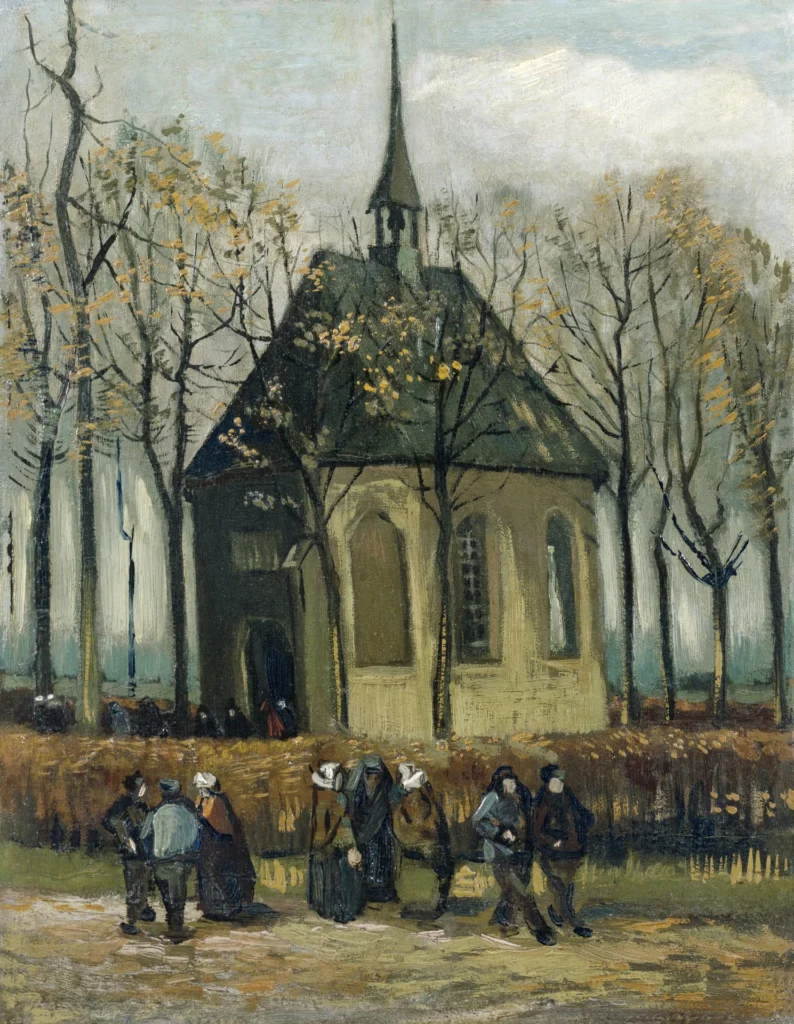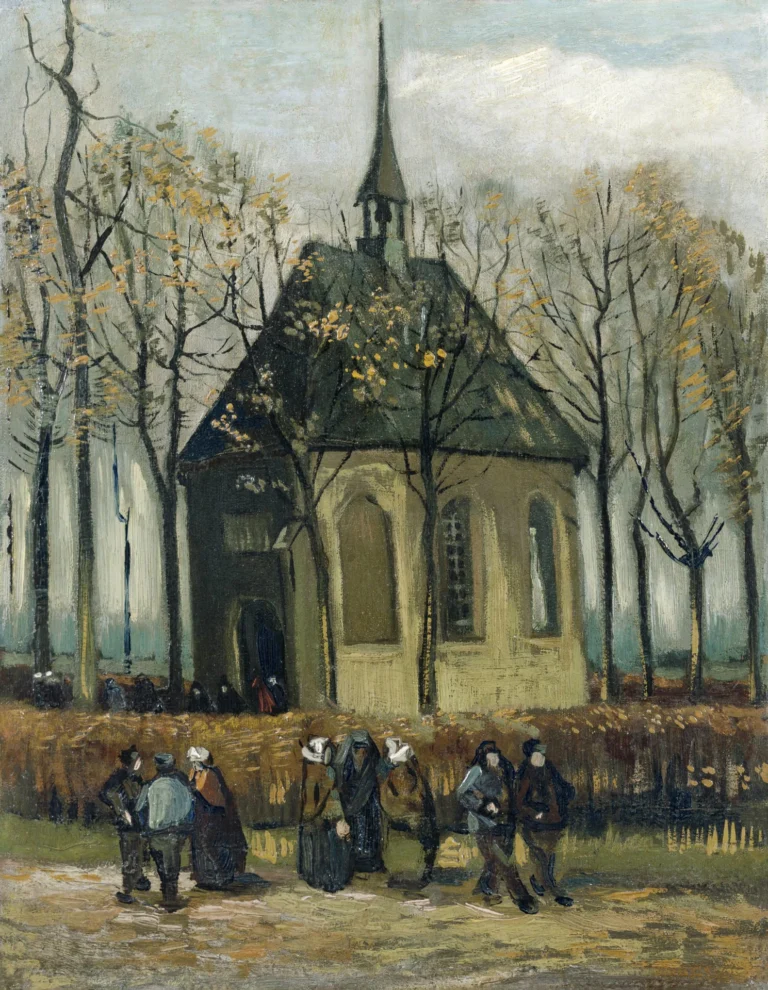Congregation Leaving The Reformed Church In Nuenen (1884)
This painting, completed in two distinct phases, captures a congregation exiting a church in the village of Nuenen, where Van Gogh lived with his parents. Initially painted in 1884, it reflected a personal connection to his family's religious life. After his father's death, Van Gogh returned to the work in 1885, transforming it to honor his father's memory by depicting mourners and enhancing the autumnal palette. This piece serves as a significant narrative of both community and personal loss.
1884, 1885
About the Artwork
Congregation Leaving the Reformed Church in Nuenen is imbued with deep emotional resonance reflecting Van Gogh's life and relationships. The initial creation in early 1884 coincided with a period of domesticity and family ties, as Van Gogh lived with his parents and produced works influenced by their lives. The painting portrays not just the physical act of worship but also the societal ties and spiritual connections of rural life. Following his father's passing, Van Gogh revisited the piece, adding elements that transformed it into a somber homage. The layers of community interaction coupled with his personal grief convey the artist's struggle with loss, making it a profoundly human work.
Did You Know
Liked what you see? Add it to your collection.
Enjoyed reading? Share it.
... continued
Creation and Modifications
The painting was initially executed in January or February 1884, while Van Gogh was living with his parents in Nuenen, a small village in the North Brabant district of the Netherlands. During this period, his father was the pastor of the Dutch Reformed Church depicted in the painting. The original composition featured a church, a hedge, bare trees, and a peasant carrying a spade in the foreground. This work was a gift to his mother, who was confined to her house with a broken leg.
Technical Details
The painting is oil on canvas, measuring 41.3 cm by 32.1 cm. It is catalogued as 'F25' in Jacob Baart de la Faille's 1928 'The Works of Vincent van Gogh' and as 'JH521' in Jan Hulsker's 1978 'The Complete Van Gogh'.
Condition and Restoration
The painting underwent a restoration treatment in 1961, during which a synthetic alkyd resin varnish was applied. However, this varnish caused the surface to become glossy and yellowed, altering the original color scheme intended by Van Gogh. After the painting was stolen in 2002 and recovered in 2016, it was thoroughly examined and treated. The non-original varnish was carefully removed using a stereomicroscope to avoid damaging the original paint surface. Additionally, discolored retouches were reduced, and areas of fragile paint were consolidated. A fine spray-varnish was applied to resaturate the colors without adding gloss.
Provenance and Exhibitions
The painting has been part of the Van Gogh Museum's collection in Amsterdam since 1973. It has been exhibited in various locations, including the Stedelijk Museum in Amsterdam, the Baltimore Museum of Art, and the Hayward Gallery in London. The painting was donated by Van Gogh to his mother and later passed through several family members before being sold to the Vincent van Gogh Foundation in 1958.
Theft and Recovery
Congregation Leaving the Reformed Church in Nuenen was stolen from the Van Gogh Museum on December 7, 2002, along with another Van Gogh painting, 'Beach at Scheveningen in Stormy Weather.' The paintings were recovered by the Italian Guardia di Finanza in January 2016 near Naples, Italy, and were returned to the Van Gogh Museum, where they were put back on display in March 2017.










